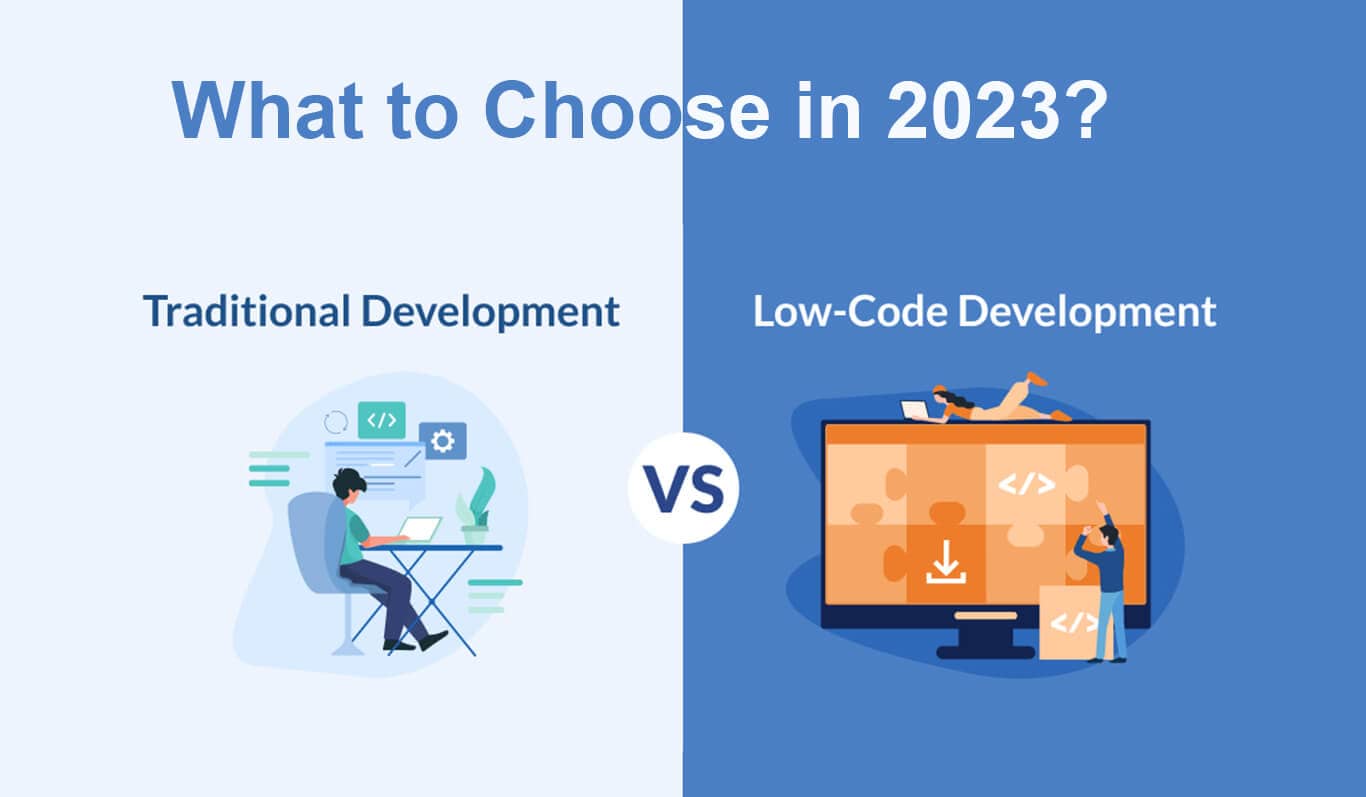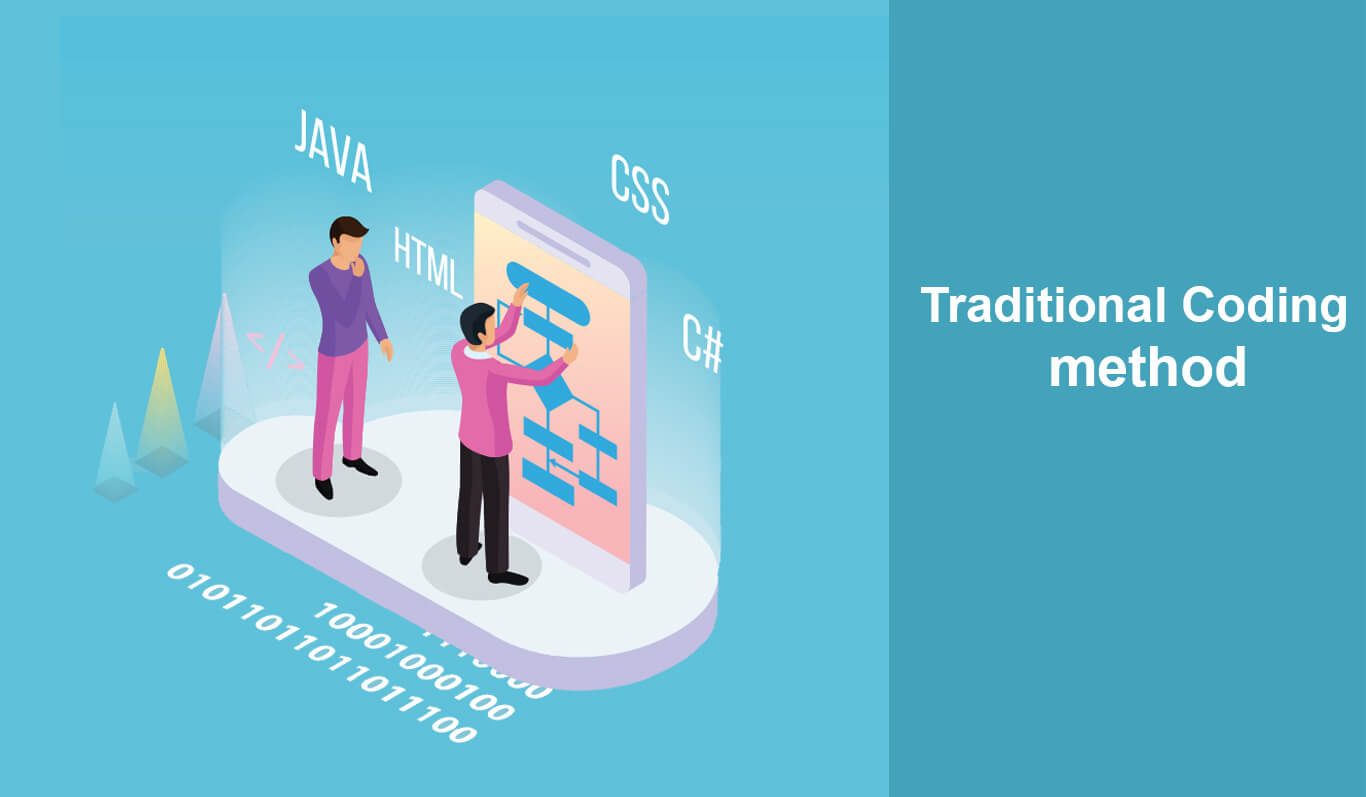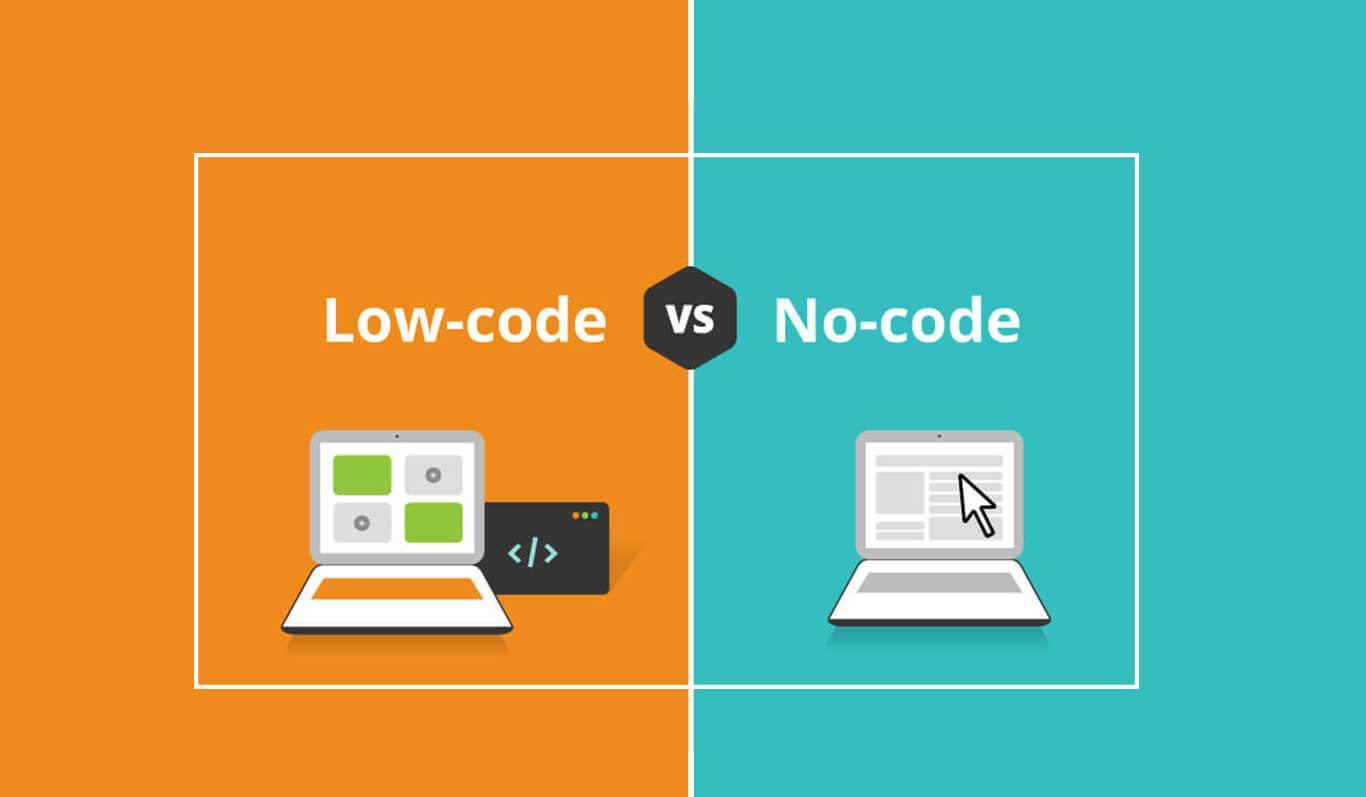Traditional Development or Low Code/No Code - What to Choose in 2023?

No-code and low-code development has become increasingly popular among software development houses when creating custom applications.
The goal here is to increase productivity and do more with your limited task force. Low-code/no-code platforms can speed up development, increase ROI, and reduce developer shortages.
Despite the debate over low-code vs. no-code development, they shouldn't be viewed as either/or types of situations. Rather, these opposing approaches to application development provide an excellent opportunity where they can work together to accelerate and innovate.
More and more companies are integrating no-code and low-code development into their application development lifecycle. As low-code and no-code development become increasingly common, they will also help find solutions more easily, increase productivity, and facilitate collaboration.
Traditional Coding Method

Code-writing traditionally refers to working with a team of developers and programmers to gather specific requirements, create a plan, and create custom code to meet the requirements. Traditional approaches are fine, but they're often expensive, complex, and delayed because of things like:
- Errors in the software code
- Estimation error
- Challenges in testing
- Delays in several infrastructures
In addition, a traditional development approach requires continuous maintenance by the developer.
Low Code or No Code Method
As opposed to custom development, no-code/low-code platforms let you create business apps without writing any code.

Platforms with low-code/no-code are basically tools that make rapid mobile app development easier. As technology continues to evolve, businesses of all sizes and industries are realizing the need to embrace digital transformation. It is imperative that they have software and/or applications that fit customers' expectations in the digital world in order to remain competitive and relevant. Low-code/no-code platforms are great for scalability, accessibility, and affordability. With these platforms, users can easily create their own applications with an easy-to-use visual interface, which includes features such as -
- Easily drag and drop modules
- Importing spreadsheets
- Lists of selections
The user is able to create whole applications from templates that include general business processes and logic by dragging and dropping on a graphic interface.
What is the Best Time to Use Traditional Development?
Wide range of customizations: You might want to stick with traditional development if you know the application requires high levels of customization. Low-code platforms usually allow you to customize the underlying code; however, if you want to customize every component in your application, custom software development is the best option.
Specific requirements: It would take highly skilled developers and specific code to deliver the performance level the platform requires for highly specialized needs, like optimizing performance for a specific usage pattern.
Choice of programming language: You cannot make changes to low-code platforms using just any programming language or logic since the underlying code is proprietary. High-coding is the best option if you prefer a particular language or set of languages.
Intuitive and stylized user interface: If you have to do a lot of reworking on the underlying code in order to achieve your ideal user interface, you may want to stick with high-code development.
When Should You Use Low-Code?
Speed: A functioning application can take even highly skilled programmers many months to develop using traditional coding methods. An idea can be quickly turned into a working application with low code.
Cost: Since low-code application development doesn't require specialized programming knowledge, you can keep your team lean.
Reduced maintenance: With low-code platforms, you can create standardized, reusable components that have the code already built in, reducing bugs and integration issues. The advantage of this is that you don't need to have an extensive development team.
Rapid prototyping and collaboration: Using a graphical user interface for more visual modeling, low-code applications allow business stakeholders to be more involved from start to finish. By collaborating between IT and the business, you're more likely to create a solution that meets all your requirements.
How Will Low-Code Development Affect Traditional Development?
Low code and a more traditional approach can coexist peacefully because they are used in different ways. Moreover, there is no solid evidence to support the notion that low code can replace software developers. Despite the fact that more non-technical developers are developing software using low-code and no-code tools, highly skilled developers will always be needed to develop tailored software solutions using high-code languages as well as low-code platforms in growing numbers. The best developers should add low-code approaches to their toolbox along with traditional high-code approaches. However, the advantage of low code, aside from being fast and simple, is its ability to bolster existing systems' functionality and usability. Both traditional and low-code programmers will be needed to maintain existing systems. Therefore, it is much more feasible for low-code and high-code to complement one another than for them to replace one another.
Conclusion
In terms of coexisting, developers should embrace low-code for its uses that it excels at, such as addressing repetitive, manual processes and improving customer and constituent self-service options. The more they see the benefits of the faster, simpler approach to application development, they will augment their custom code efforts with this.
Developers and non-developers alike can benefit from low-code/no-code platforms by obtaining access to all the necessary tools and resources. A company's programming skills are the only thing that comes to the rescue when a platform cannot meet its requirements. The importance of developers cannot be overstated.
FAQs
Low-code versus traditional development - which is better?
If used correctly, low-code has many advantages. There is no single answer to this question. You should choose the development methodology that suits your budget, your requirements, your timeline, and the unique nature of your project.
Is it a good idea for startups to use low-code development?
Low-code software development is ideal for startups with limited time and resources. A single developer can develop your app without spending multiple months on it. Using low-code platforms accelerates your development process. Low-code MVP development can also help startups build prototypes and attract stakeholders.
Request a Quote
Categories
Popular posts
Best Practices for Software Product Engineering Every CTO Should Implement
2023-14-18How to Build Your Own On-Demand Carpooling App Services?
2023-08-25How to Start an On-Demand Fuel Delivery Business: A Comprehensive Guide
2023-07-28Empowering Miners: How Fleet Management Apps are Transforming the Mining Industry?
2023-07-21A Complete Guide to Develop a Food Delivery App for Restaurants in 2023
2023-07-08Mobile Apps Transforming the Travel Industry: A Game-Changer in Travel Planning and Experience
2023-07-07
